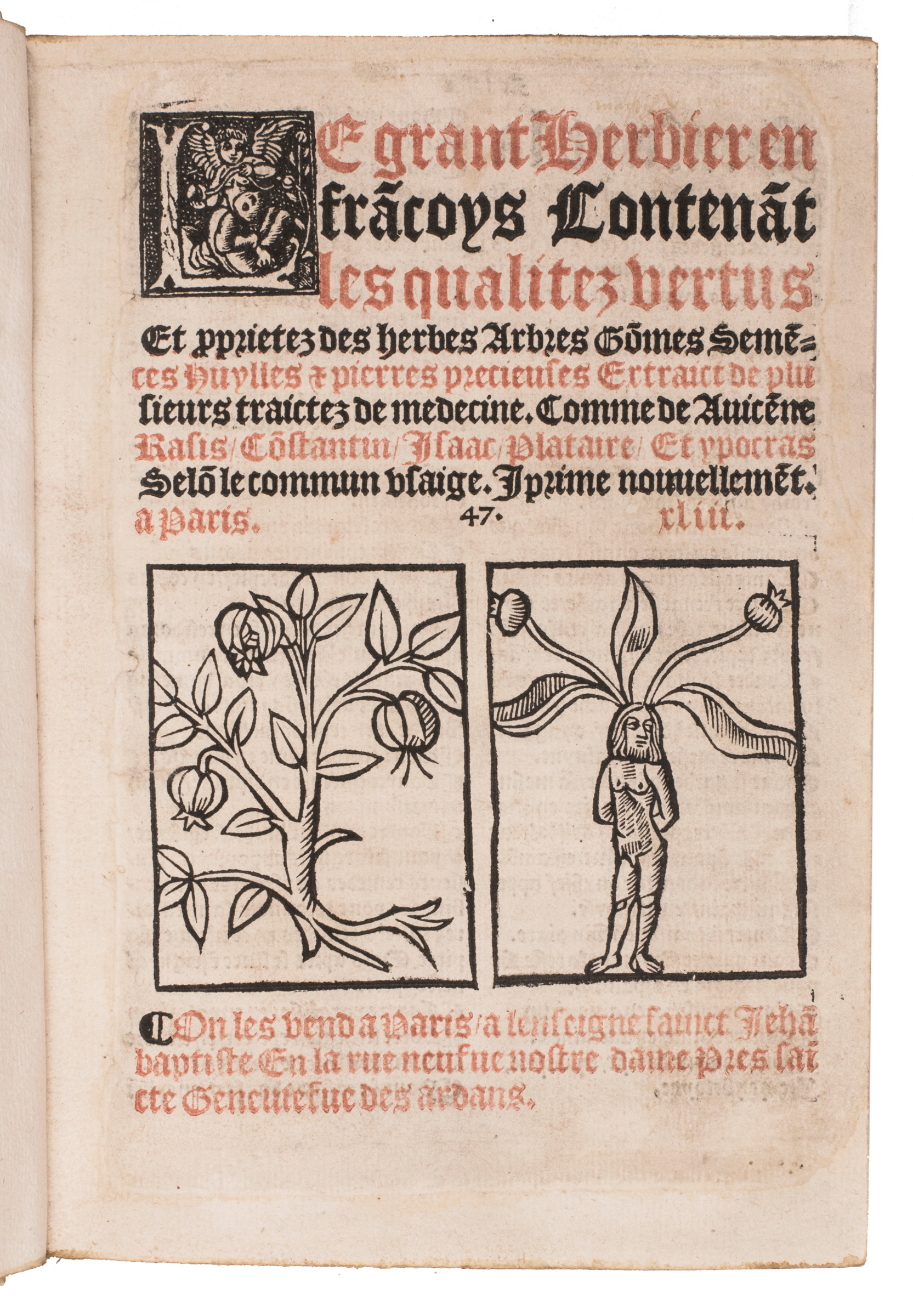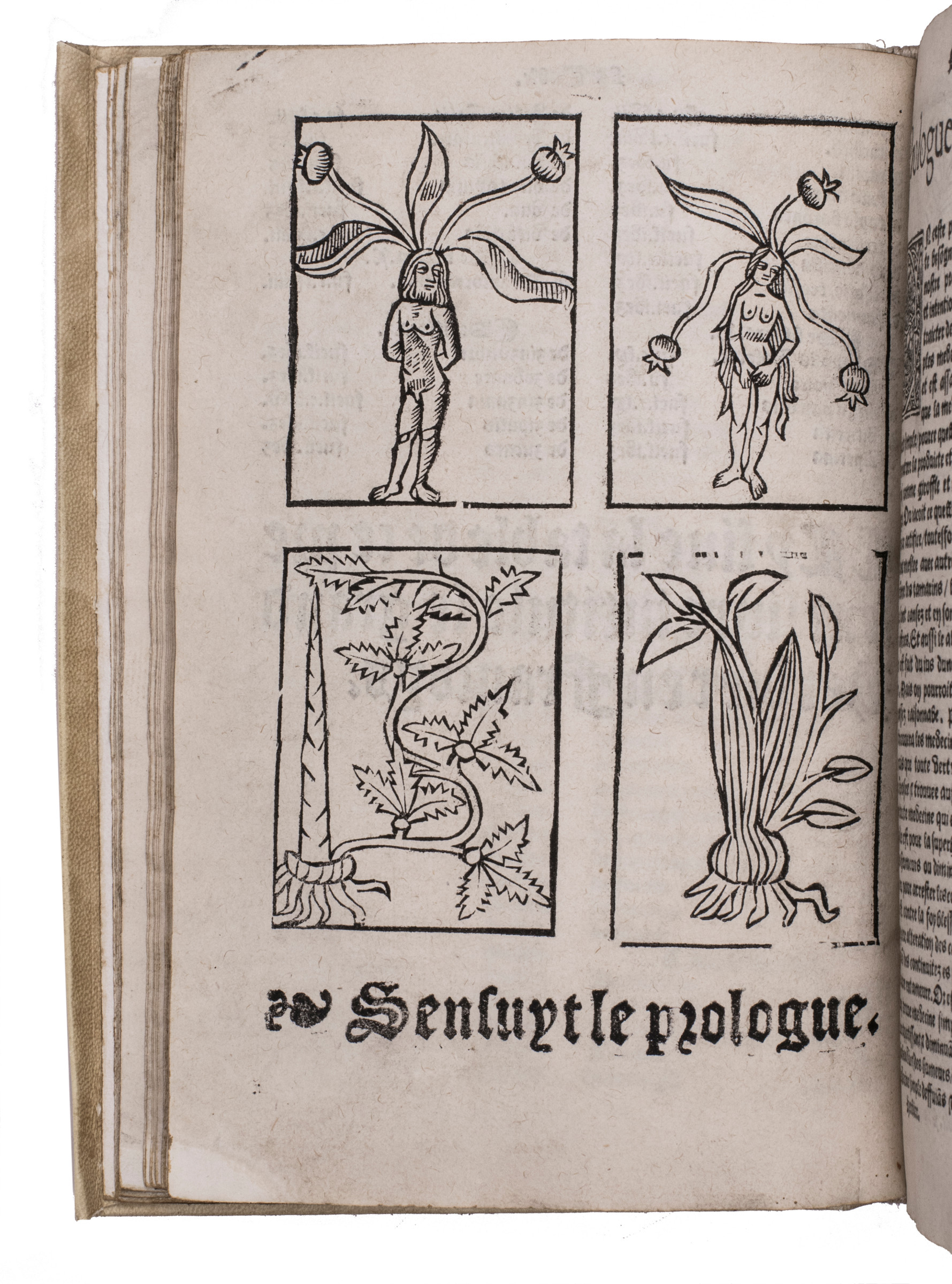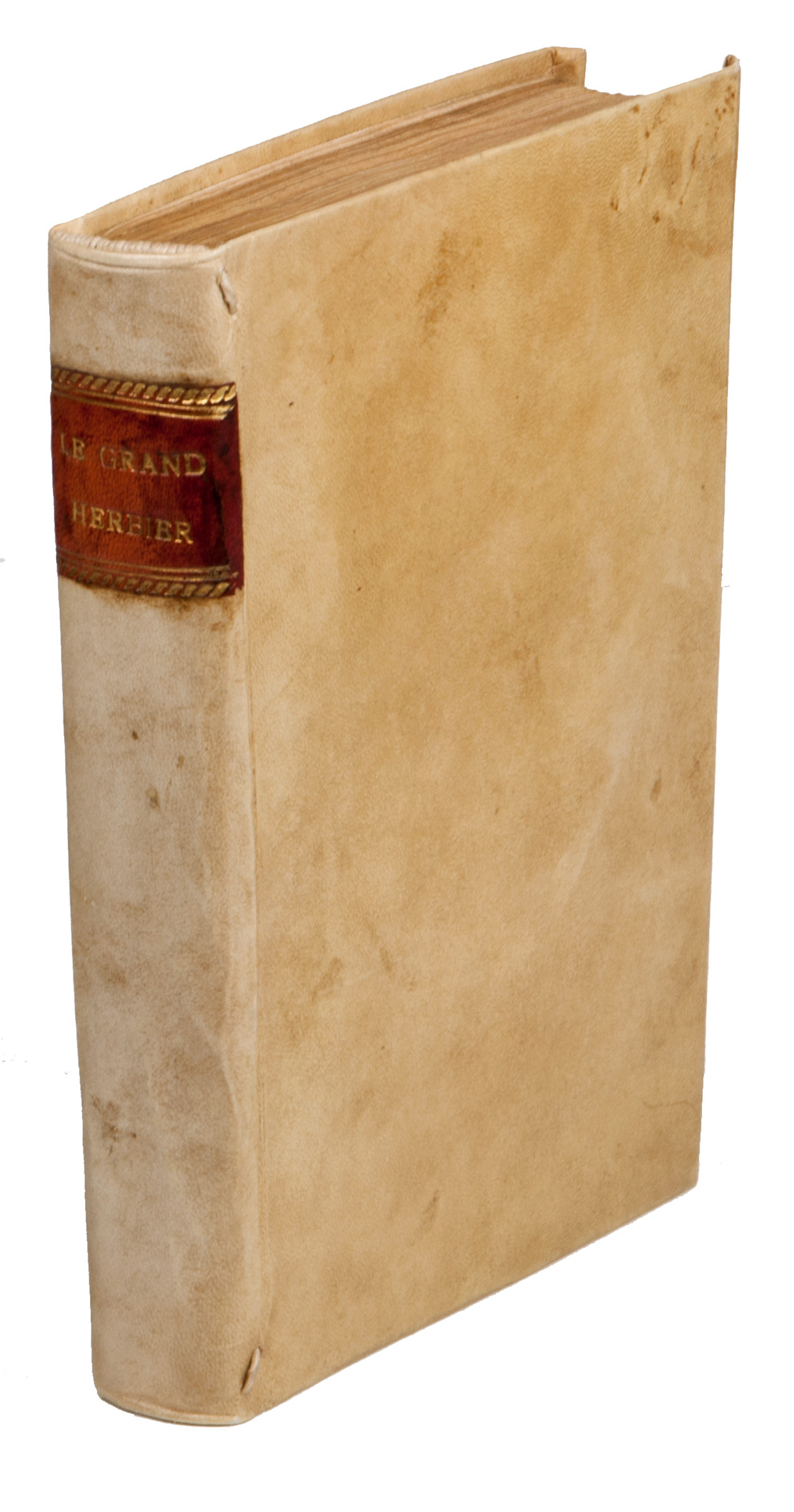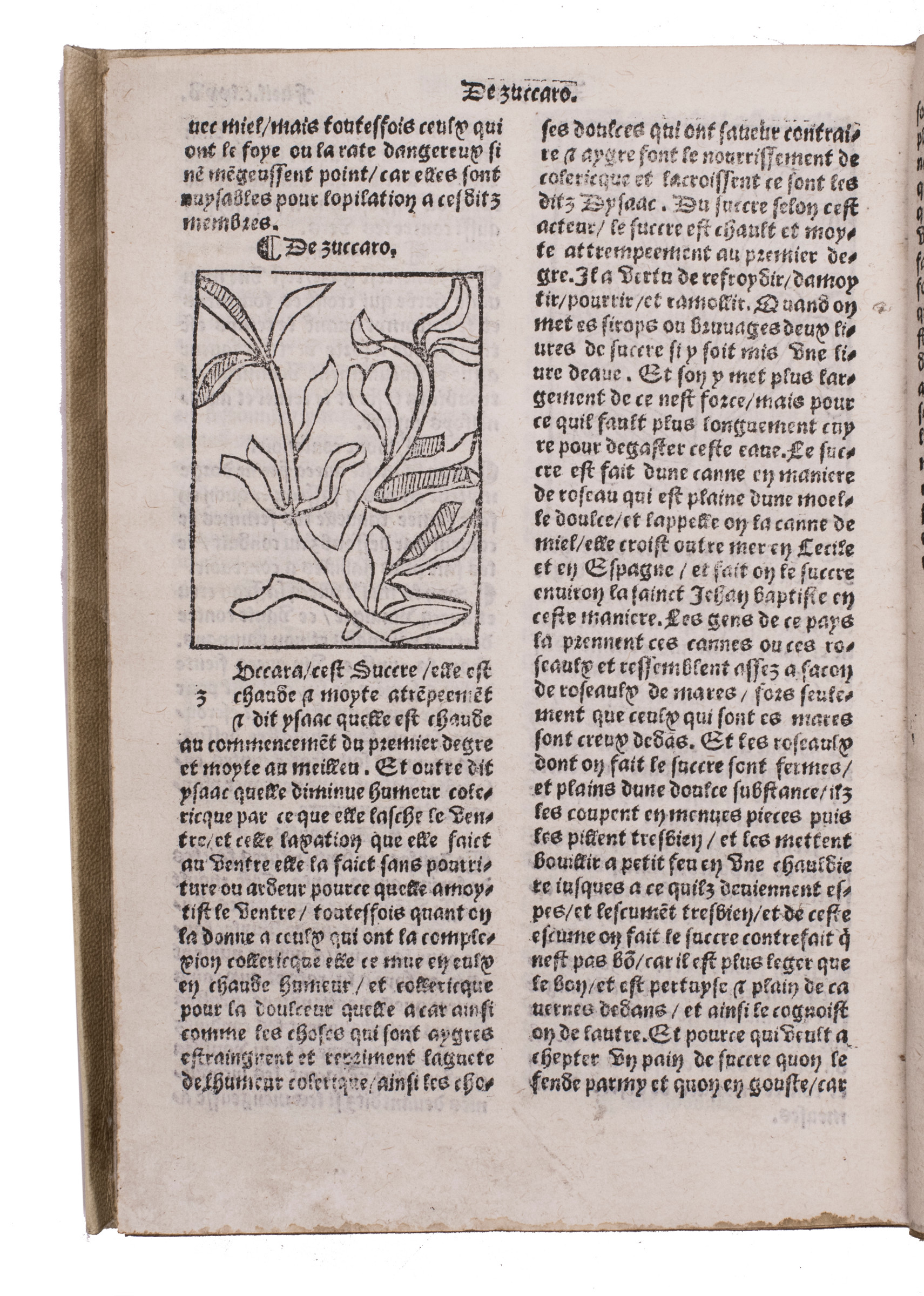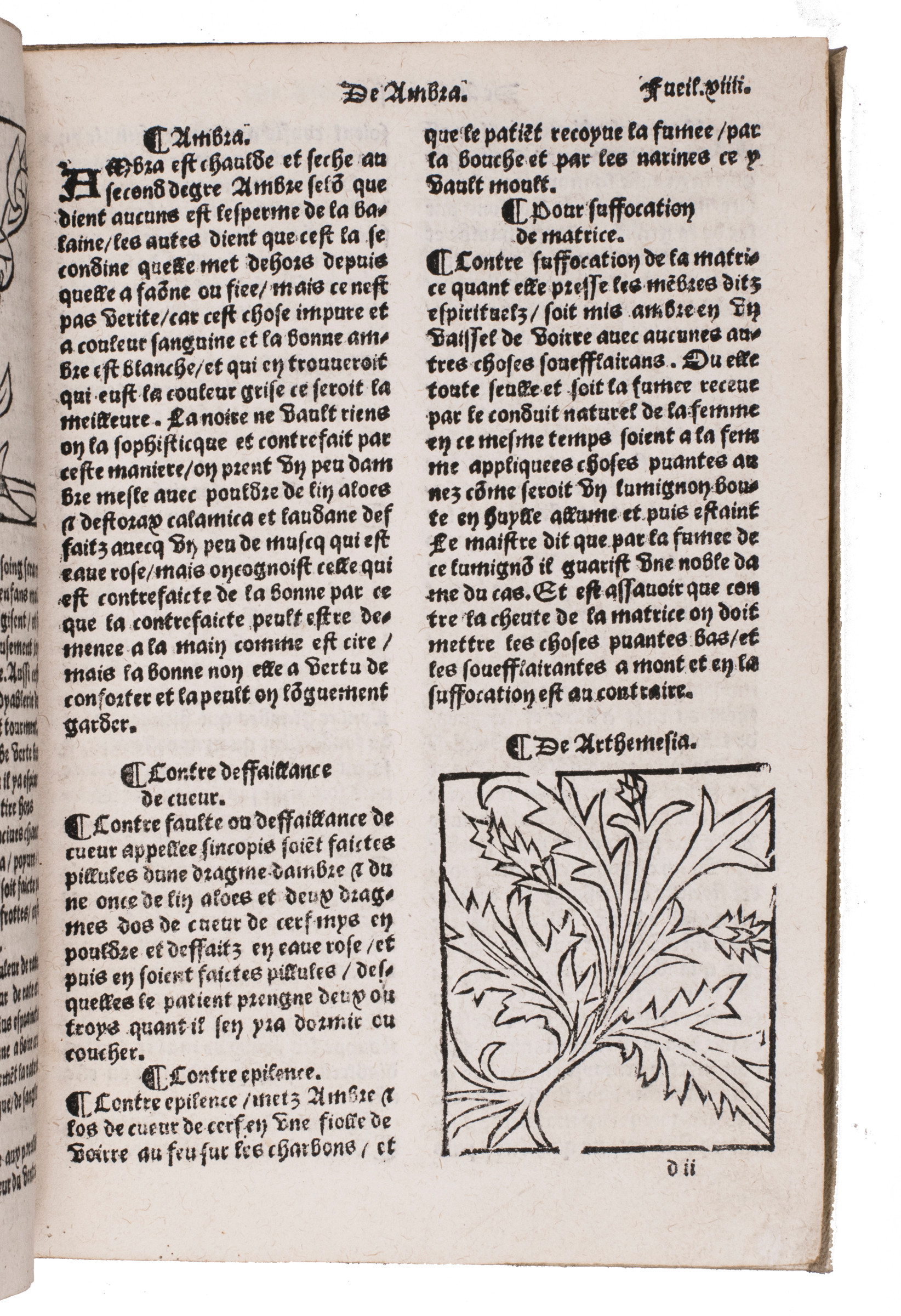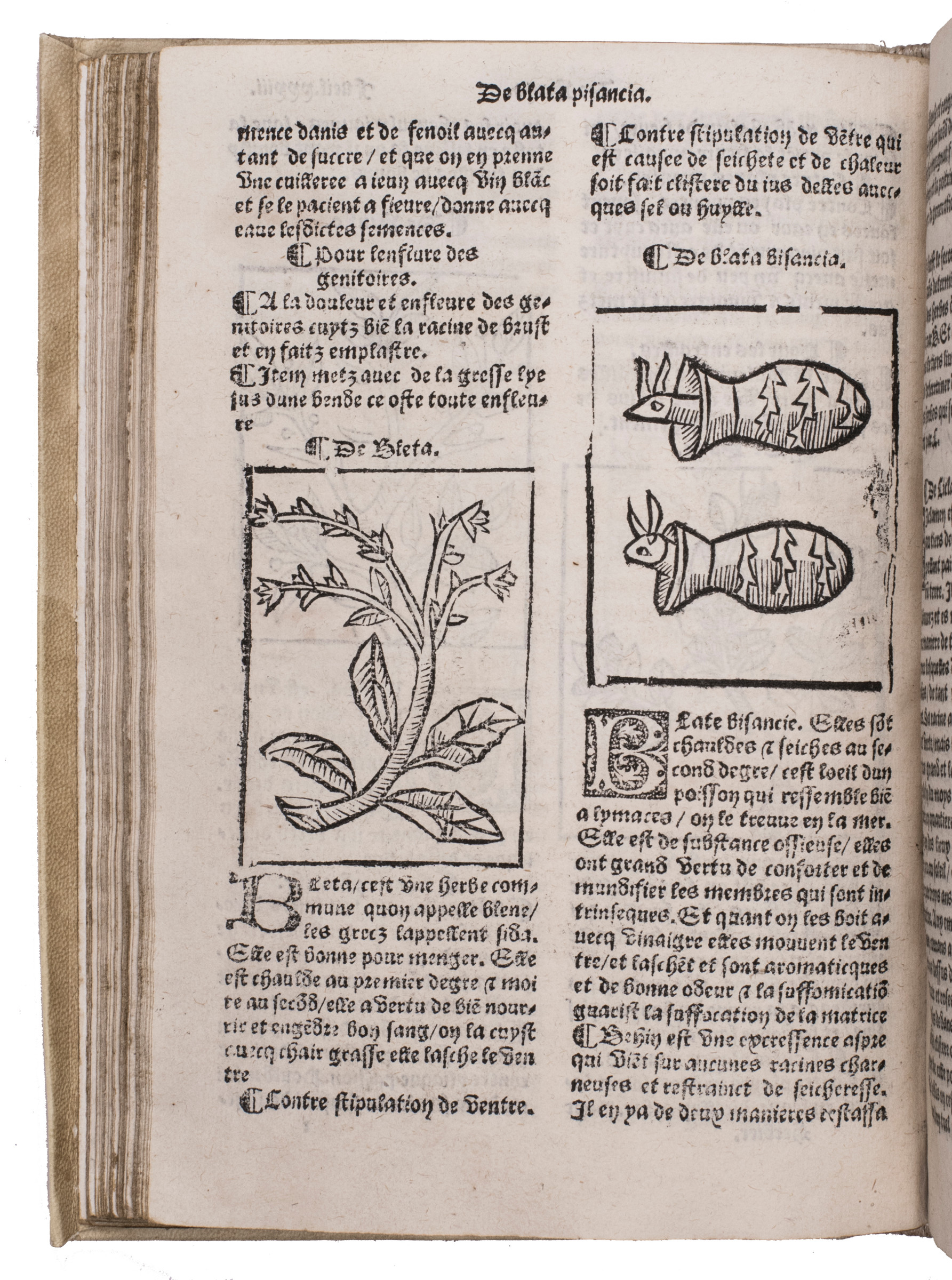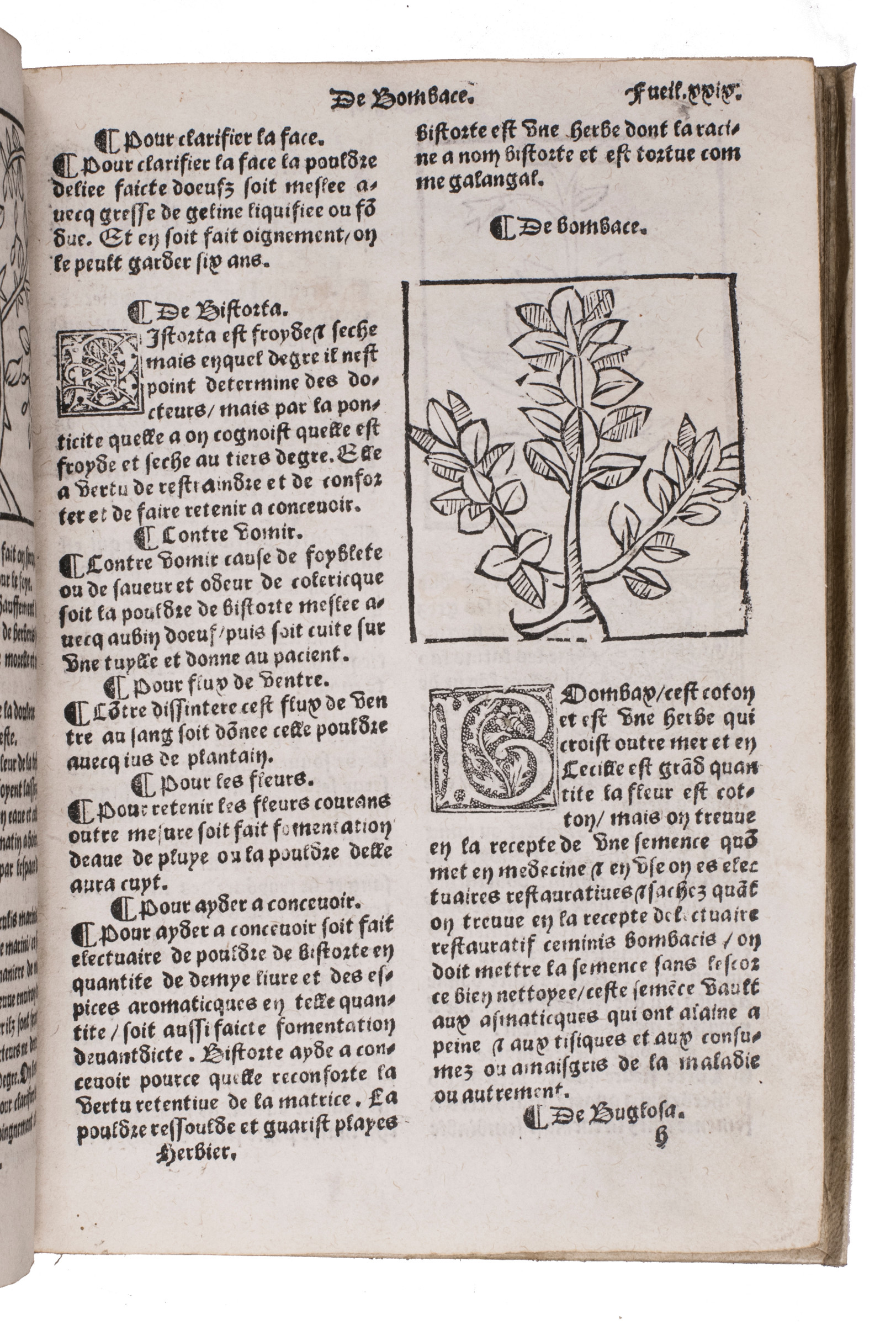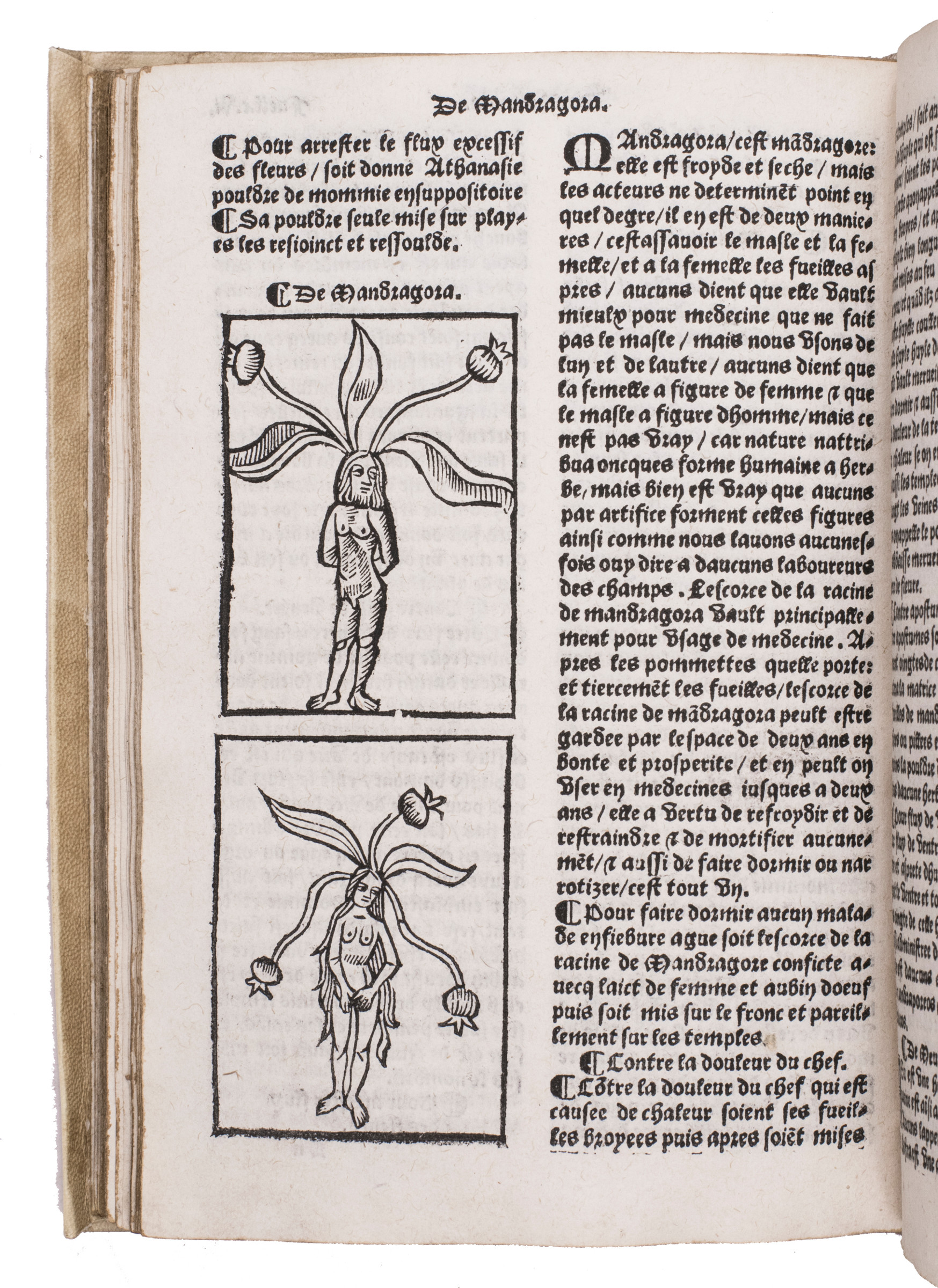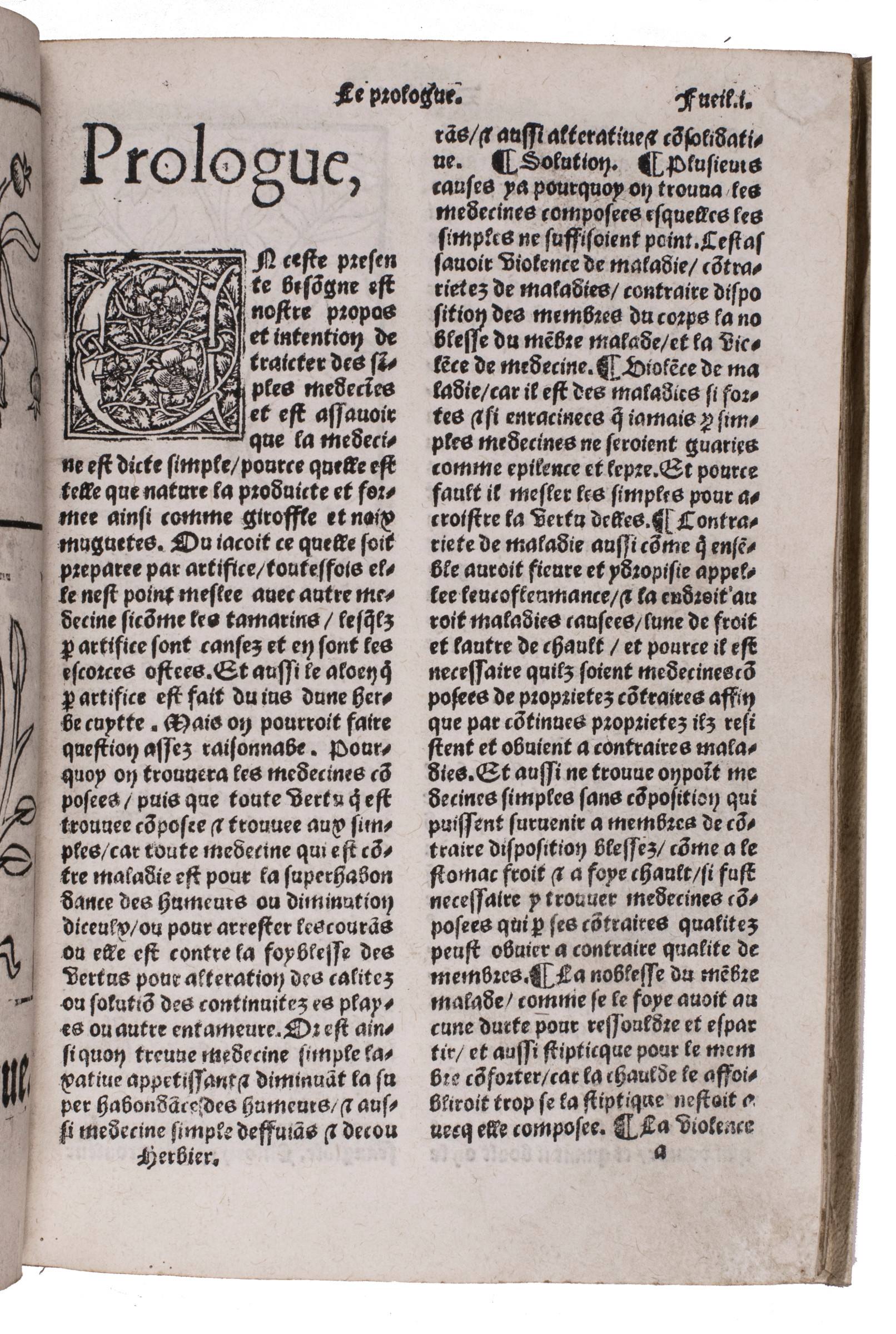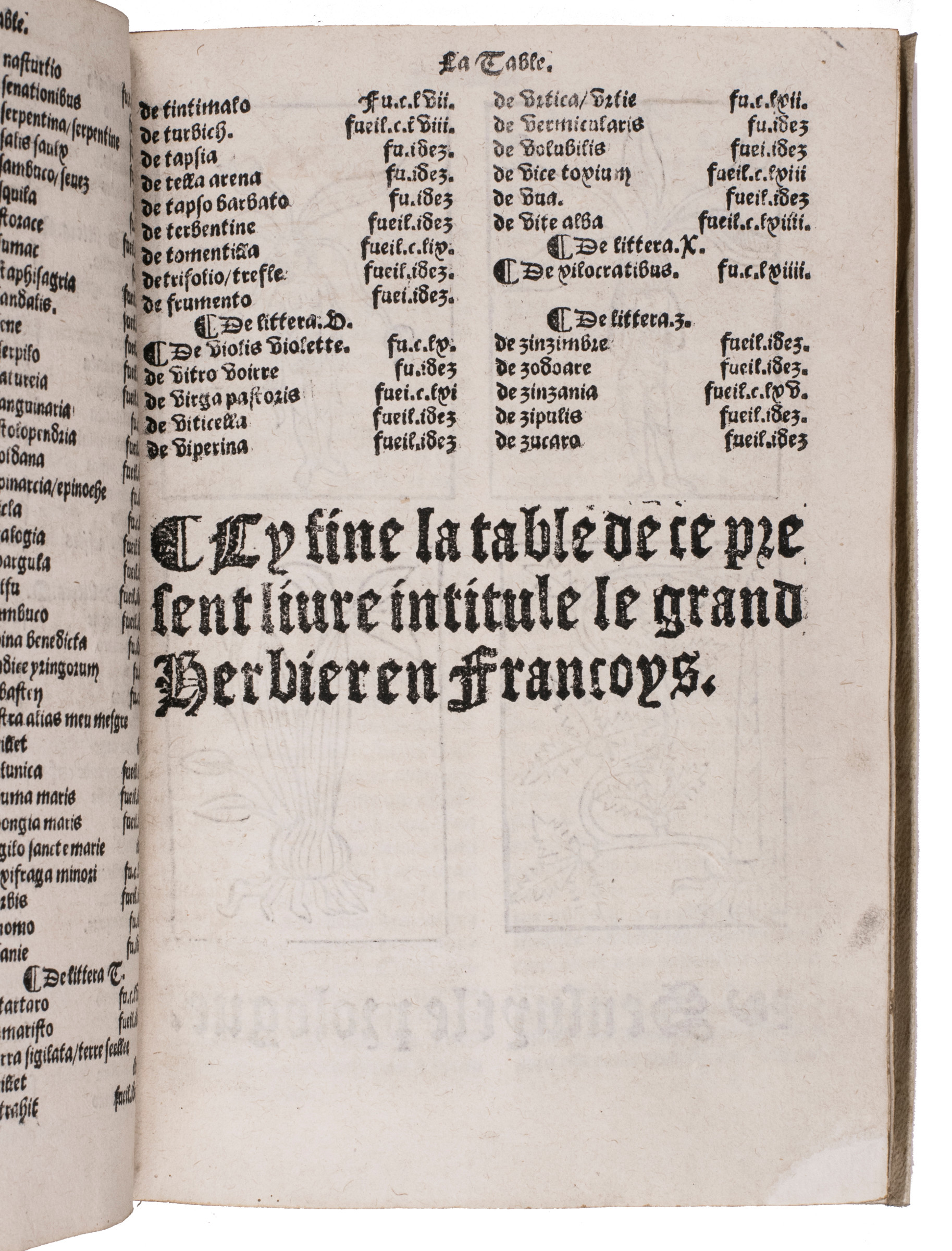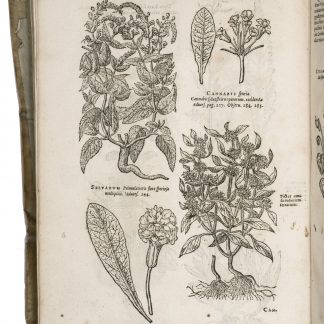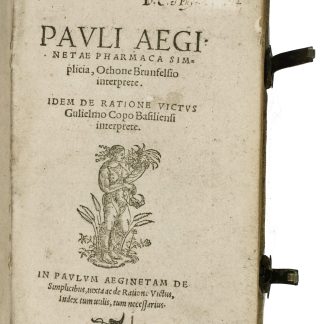[VERKAUFT]
Dieses Stück ist bereits verkauft. Am Ankauf eines gleichwertigen Exemplars bzw. von Stücken ähnlicher Bedeutung sind wir immer interessiert.
Very rare French herbal, with ca. 300 woodcut illustrations, including a male and female mandrake
Le grant herbier en Francoys contenant les qualitez vertus et proprietez des herbes arbres gommes semences huylles et pierres precieuses extraict de plusieurs traictez de medecine. Comme de Avicenne Rasis, Constantin, Isaac, Plataire, et Ypocras selon le commun usaige. Imprime nouvellement a Paris. 47. xliii.
Small 4to (20 x 14.5 cm). (22), "CLXXVI" [= CLXVI] ff. With the title-page printed in red and black and about 300 woodcut illustrations in the text (nearly all botanical, with a few animals, including an elephant) including a few repeats (2 on the title-page, 4 facing the first page of text and at least 1 in the text). Later sheepskin parchment, with red morocco title-label on spine.
Extremely rare edition of one of the most important early French herbals, first published at Besançon (and Lyon?) ca. 1486/88 under the title Arbolayre and in Paris beginning in 1498 under the present title. More than half the text is a French adaptation of the Latin "antidotium" Dispensarium or Circa instans, attributed to Matthaeus Platearius or Matteo Plateario (d. 1161?) at Salerno and first printed at Venice in 1471. Other parts are based on the writings of Avicenna (Ibn Sina), Muhammad ibn Zakariya al-Razi, Hippocrates and other ancient medical authorities. "There is probably no book in all of herbal literature which has caused greater bibliographical confusion than Le grant herbier [...] Complete and undamaged copies are almost unheard of" (Anderson). The new editions from age of François I, who brought the French Renaissance into bloom (here almost literally), helped to bring ancient Arabic and Greek medical knowledge to a wider and less scholarly public, including many practicing pharmacologists, apothecaries and doctors. The plants are listed in alphabetical order and with an account of their medicinal uses. This edition illustrates both a male and a female mandrake. There are also a few animals, including an early illustration of an elephant. A flurry of editions by several printing offices began to appear at Paris ca. 1520, nearly all undated. The present edition belongs to a line begun by Jean Janot in or around 1521 and the woodblocks for its illustrations were apparently cut at that time. Estienne Groulleau was an employee of Denis Janot (son of Jean Janot) and would marry his widow after his passing in 1544. The widow would first publish an edition herself in 1548.
Restorations to the head and foot of the first 15 leaves (never affecting the text) and some minor thumbing, but otherwise in good condition. A very rare French herbal, richly illustrated with about 300 woodcuts.
USTC 89605 (1 copy). Cf. Anderson, Illustrated hist. of herbals, pp. 98-105 (various eds.). Arber, Herbals, p. 274 (ca. 1520/26 Sergent ed.). Choulant, Graph. Inkunabeln IV (various eds.). Durling 2146f. (ca. 1520 Nyverd ed. for Petit). Fairfax Murray (French) 226 (ca. 1533/34 Denis Janot ed.). Hunger, Early herbals 37 (widow of Jean Janot edition). Hunt 35 (ca. 1533/34 Denis Janot ed.). Klebs, Early herbals 54-58 (various eds.). Nissen BBI 2335 (widow Denis Janot, 1548). Wellcome 3111-3113.

